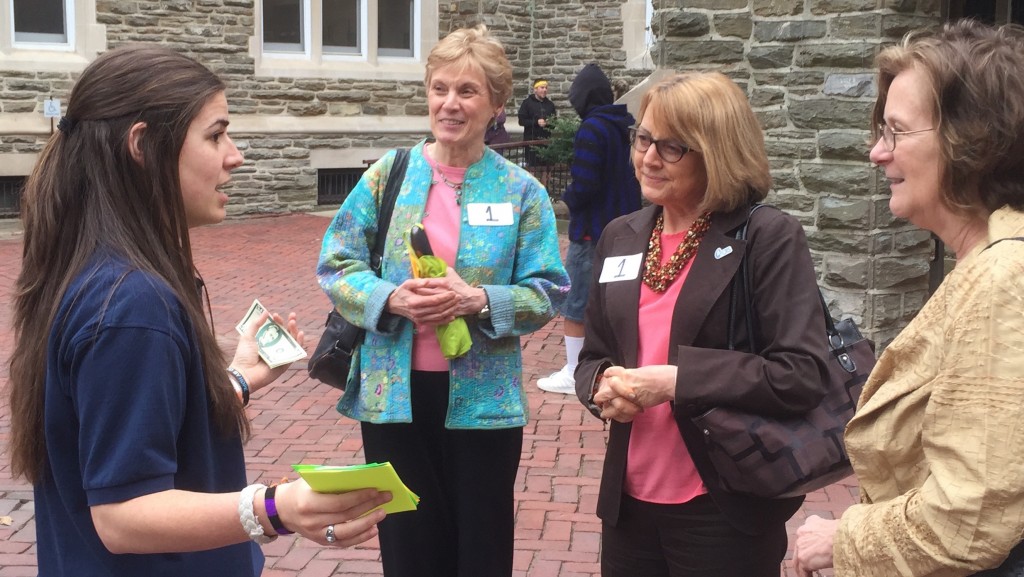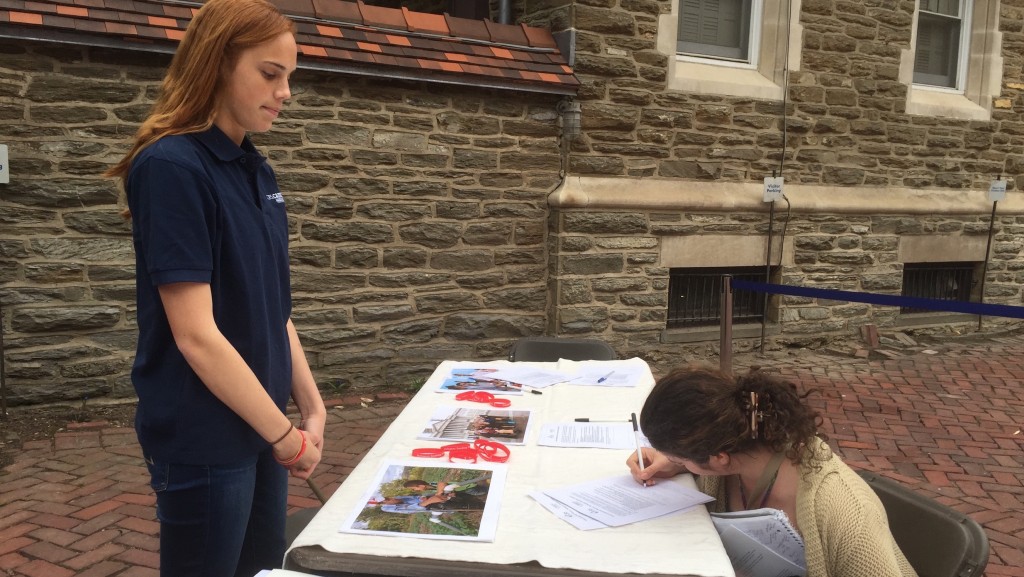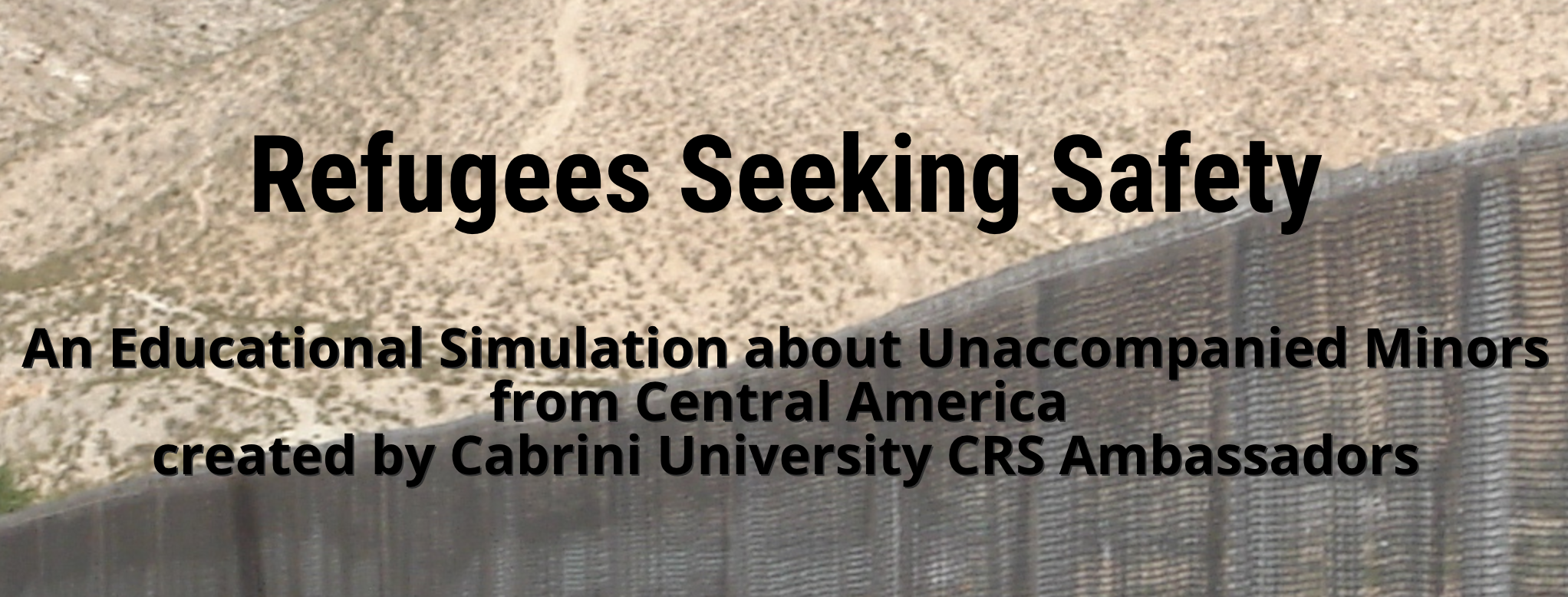PHOTOS FROM A SIMULATION






Introduction
This website will enable a CRS Ambassador chapter or a social justice class to create a simulation to educate participants on the issues facing refugees, especially unaccompanied minors. These children or teens are fleeing gang violence, domestic abuse, and drug cartels in their home countries of Guatemala, Honduras, and El Salvador.
We fully realize it is impossible for us to comprehend the reality these minors face. However, we feel the need to engage participants in what thousands of children must undergo. And so we created a simulation to give a small sense of their reality. In a 25-minute simulation, participants experience:
- reenactments of the type of push factors like gang threats that drive unaccompanied minors to flee their homes for safety;
- reflections on root causes of the migration, with explanations on what is being done to address “push” factors by agencies such as CRS;
- reenactments of what happens to minors when they are detained at the US-Mexico border. Some may be put in detention centers, others deported, and some reunited with family in the States.
- explanations, through the lens of Catholic Social Teaching, of proposals for what needs to be done to improve the treatment of the young people, the legal process that young people must undergo to prove their case as refugees, as well as options for what might happen to the minors;
- opportunities to engage in advocacy, including a range of options from social media to petitions to advocacy emails; and
- reflection and prayer to deepen the participants’ commitment to solidarity.
The four headings below (LEARN, PLAN, REFLECT, ADVOCATE) will give you essential background on the issue, instructions on how to set up the simulation, and resources for reflection, prayer, and advocacy.
Steps To Prepare This Simulation
TO LEARN MORE, CLICK ON THE FOUR HEADERS BELOW.
We have broken down what you need to learn into 6 categories.
We have provided a very specific model of what this simulation might look like.
REFLECT
While the simulation is action-filled, we set aside a time and space for personal reflection.
It is essential that we make our voices heard on this issue. Here’s some ways to advocate.
Video of simulation at Cabrini College
Now go to the next page, PLAN, to get directions/inspiration how to set up your own simulation.
